|
Books Should Be Free Loyal Books Free Public Domain Audiobooks & eBook Downloads |
|
|
Books Should Be Free Loyal Books Free Public Domain Audiobooks & eBook Downloads |
|
History Books |
|---|
|
Book type:
Sort by:
View by:
|
By: Robert Sterling Yard (1861-1945) | |
|---|---|
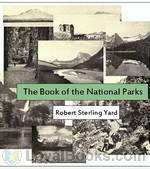 The Book of the National Parks
The Book of the National Parks
Robert Sterling Yard (February 1, 1861 – May 17, 1945) was an American writer, journalist, and wilderness activist. Born in Haverstraw, New York, Yard graduated from Princeton University and spent the first twenty years of his career in the editing and publishing business. In 1915, he was recruited by his friend Stephen Mather to help publicize the need for an independent national park agency. Their numerous publications were part of a movement that resulted in legislative support for a National Park Service (NPS) in 1916... | |
By: Robert van Bergen | |
|---|---|
 Story of Japan
Story of Japan
Robert van Bergen was one of the first Americans to enter Japan after the country opened its borders to foreign visitors following centuries of isolation. He taught English to Japanese aristocrats, eventually becoming principal of the Nobles' School in Tokyo. This book, which he wrote for young readers during his stay in the country, was first published in 1897. It includes many illustrations. From the preface: "Our schoolbooks on geography and general history touch but lightly upon the Japanese... | |
By: Robert Wood Williamson | |
|---|---|
 The Mafulu
The Mafulu
The Mafulu, Mountain People of British New GuineaBy Robert W. WilliamsonINTRODUCTION By Dr. A.C. Haddon It is a great pleasure to me to introduce Mr. Williamson's book to the notice of ethnologists and the general public, as I am convinced that it will be read with interest and profit. Perhaps I may be permitted in this place to make a few personal remarks. Mr. Williamson was formerly a solicitor, and always had a great longing to see something of savage life, but it was not till about four years ago that he saw his way to attempting the realisation of this desire by an expedition to Melanesia... | |
By: Rodris Roth (1931-2000) | |
|---|---|
 Tea Drinking In 18th-Century America: Its Etiquette And Equipage
Tea Drinking In 18th-Century America: Its Etiquette And Equipage
The title of this 1961 Smithsonian Institution bulletin says it all. “In 18th-century America, the pleasant practice of taking tea at home was an established social custom with a recognized code of manners and distinctive furnishings. Pride was taken in a correct and fashionable tea table whose equipage included much more than teapot, cups, and saucers. It was usually the duty of the mistress to make and pour the tea; and it was the duty of the guests to be adept at handling a teacup and saucer and to provide social ‘chitchat... | |
By: Roger Livingston Scaife (1875-1951) | |
|---|---|
 Cape Coddities
Cape Coddities
A message from the past from a former Cape Cod resident who delves in all things that make Cape Cod special. From explaining the adventures of hunting clams, to neighbor picnics and the food served, to boating, antique scavenging, and the beautiful rustic Cape houses...just everything that makes the Cape the ideal place, the place that he lived and was so proud of. | |
By: Rosa Nouchette Carey (1840-1909) | |
|---|---|
 Other People's Lives
Other People's Lives
A series of stories by Rosa Nouchette Carey who was a popular English novelist, whose works reflected the wholesome values of her time. They often contained the grit and realism of the day. Carey often wrote about the domestic fiction of the period, which she was presumed to have had personal acquaintance with such as - families making do on small means, coming to terms with bereavement and new responsibilities, moving into a new neighbourhood or a different house and allegiances, frictions and jealousies among members of a large family. - Summary by Lynda Marie Neilson | |
By: Rudolf Lothar (1865-1943) | |
|---|---|
 Golem: A legend of old Prague
Golem: A legend of old Prague
Rabbi Loeb creates a clay man to house a perfect soul that he hopes will not be blighted by human prejudices. The plan does not go as he hoped... This is one of many stories about the golem, all of which involve Rabbi Loeb , a 16th-century talmudic scholar known as The Maharal. Rodolf Lother was an Austrian writer. This story was published in the B'nai Brith journal The Menorah in 1896 and subsequently included in the author's German language book Der Golem: Phantasien und Historien . - Summary by Adrian Praetzellis | |
By: Rudolf Virchow (1821-1902) | |
|---|---|
 On Famine Fever and Some of the Other Cognate Forms of Typhus
On Famine Fever and Some of the Other Cognate Forms of Typhus
Rudolf Virchow , professor of medicine and pathology at the Charité Hospital in Berlin, published more than 2000 papers and dozens of books. His investigation of the 1847-1848 typhus epidemic in Upper Silesia laid the foundations of public health in Germany. During the Revolution of 1848, Virchow helped found a journal promoting medicine as a social science. For physicians, his contributions to the understanding of the pathophysiology of disease and to the working vocabulary of medicine were fundamental, but Virchow also believed that social injustice and political oppression lay at the heart of many illnesses and that "the physician is the natural attorney of the poor." | |
By: Rudyard Kipling (1865-1936) | |
|---|---|
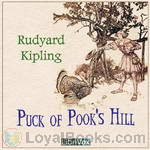 Puck of Pook's Hill
Puck of Pook's Hill
Puck of Pook’s Hill is a children’s book by Rudyard Kipling, published in 1906, containing a series of short stories set in different periods of history. The stories are all told to two children living near Pevensey by people magically plucked out of history by Puck. | |
 Plain Tales from the Hills
Plain Tales from the Hills
Named a "prophet of British imperialism" by the young George Orwell, and born in Bombay, India, Rudyard Kipling had perhaps the clearest contemporary eye of any who described the British Raj. According to critic Douglas Kerr: "He is still an author who can inspire passionate disagreement and his place in literary and cultural history is far from settled. But as the age of the European empires recedes, he is recognised as an incomparable, if controversial, interpreter of how empire was experienced. That, and an increasing recognition of his extraordinary narrative gifts, make him a force to be reckoned with." This force shines in THE PLAIN TALES FROM THE HILLS. (Introduction by Mike Harris) | |
 France At War: On the Frontier of Civilization
France At War: On the Frontier of Civilization
In 1915, as the "Great War" (World War 1) entered its second year Rudyard Kipling made a journalistic tour of the front, visiting French armed forces. By then he was already winner of the Nobel Prize for Literature (the first writer in English to be so honoured). He published his observations in articles in the Daily Telegraph in England, and in the New York Sun. At that stage of the war nationalistic sentiments were running high but the true cost of war was beginning to be understood "at home"... | |
By: Rufus Jones (1863-1948) | |
|---|---|
 Nature and Authority of Conscience
Nature and Authority of Conscience
Rufus Matthew Jones was an American religious leader, writer, magazine editor, philosopher, and college professor. He was instrumental in the establishment of the Haverford Emergency Unit . One of the most influential Quakers of the 20th century, he was a Quaker historian and theologian as well as a philosopher. In 1917 he helped found the American Friends Service Committee. This work was delivered as a Swarthmore Lecture in August 1920 and was printed by the Swarthmore Press Ltd. | |
By: Rupert S. Holland (1878-1952) | |
|---|---|
 Builders of United Italy
Builders of United Italy
Holland 's provides us with an engaging history of the Unification of Italy by exploring the lives of some of its most important figures: Alfieri, Manzoni, Gioberti, Manin, Mazzini, Cavour, Garibaldi, and Victor Emmanuel. - Summary by Ciufi Galeazzi | |
By: Russel Doubleday (1872-1949) | |
|---|---|
 Stories of Inventors
Stories of Inventors
Doubleday chronicles the history of everyday inventions that form the foundation of technology now common through the world. While some of the inventions are no longer used, each example shows how inventors contributed to technology through perseverance, inspiration and clever observations. In each chapter, he gives a clear, understandable background of the technology.Many of the now outdated inventions may have inspired later inventions by meeting emerging demands. For example, Edison's filament bulb is now being phased out by more efficient CFL's, but Edison's contribution to indoor lighting likewise removed the need for inefficient gas-burning lamps... | |
By: Ruth Edna Kelley | |
|---|---|
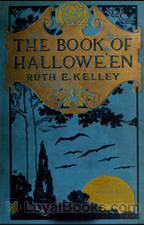 The Book of Hallowe'en
The Book of Hallowe'en
This book is intended to give the reader an account of the origin and history of Hallowe’en, how it absorbed some customs belonging to other days in the year,—such as May Day, Midsummer, and Christmas. The context is illustrated by selections from ancient and modern poetry and prose, related to Hallowe’en ideas. | |
By: S. Baring-Gould (1834-1924) | |
|---|---|
 Curious Myths of the Middle Ages
Curious Myths of the Middle Ages
This volume is an example of Sabine Baring-Gould's extensive research into the middle ages. This volume of 12 curiosities was one of Baring-Gould's most successful publications. | |
By: Saint Thomas Aquinas (1225-1274) | |
|---|---|
 Summa Theologica - 06 Pars Prima Secundae, On the Last End, On Human Acts
Summa Theologica - 06 Pars Prima Secundae, On the Last End, On Human Acts
The Summa Theologica (or the Summa Theologiae or simply the Summa, written between 1265–1274) is the most famous work of Thomas Aquinas, even though it was never finished. It was intended as a manual for beginners and a compilation of all of the main theological teachings of that time. It summarizes the reasoning for almost all points of Christian theology in the West, which, before the Protestant Reformation, subsisted solely in the Roman Catholic Church. The Summa's topics follow a cycle: the existence of God, God's creation, Man, Man's purpose, Christ, the Sacraments, and back to God... | |
 Summa Theologica - 12 Pars Secunda Secundae, Treatise on Gratuitous Graces and the States of Life
Summa Theologica - 12 Pars Secunda Secundae, Treatise on Gratuitous Graces and the States of Life
The Summa Theologica (or the Summa Theologiae or simply the Summa, written 1265–1274) is the most famous work of Thomas Aquinas (c. 1225–1274) although it was never finished. It was intended as a manual for beginners and a compilation of all of the main theological teachings of that time. It summarizes the reasoning for almost all points of Christian theology in the West, which, before the Protestant Reformation, subsisted solely in the Roman Catholic Church. The Summa's topics follow a cycle: the existence of God, God's creation, Man, Man's purpose, Christ, the Sacraments, and back to God... | |
By: Samuel B. Harding (1866-1927) | |
|---|---|
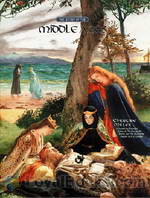 The Story of the Middle Ages
The Story of the Middle Ages
Intended for children 11 to 14 years old, The Story of the Middle Ages relates a little known period of history in an interesting and entertaining way. The author terms the Middle Ages as that period in the history of Europe between the fifth and fifteenth centuries. Its beginning is marked by the decline and fall of the mighty Roman Empire and its end is generally thought to be the dawn of the Renaissance or the Age of Discovery. The Middle Ages are also divided by historians into the Early, High and Late Middle Ages... | |
By: Samuel Cheetham | |
|---|---|
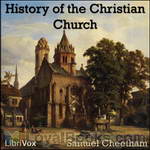 History of the Christian church
History of the Christian church
The intention of this work is to provide a sketch of the History of the Church in the first six centuries of its existence, resting throughout on original authorities, and also giving references to the principal modern works which have dealt specially with its several portions. It is hoped that it may be found to supply a convenient summary for those who can give but little time to the study, and also to serve as a guide for those who desire to make themselves acquainted with the principal documents from which the History is drawn. | |
By: Samuel Johnson | |
|---|---|
 Plan and Preface to a Dictionary of English
Plan and Preface to a Dictionary of English
The published dictionary was a huge book: with pages nearly 1½ feet tall and 20 inches wide, it contained 42,773 words; it also sold for the huge price of £4/10s. ($400?). It would be years before “Johnson’s Dictionary”, as it came to be known, would ever turn a profit; authors’ royalities being unknown at that time, Johnson, once his contract to deliver the book was fulfilled, received no further monies connected to the book. Johnson, once again a freelance writer, albeit now a famous one, faced a grim hand-to-mouth existence; however, in July 1762 the twenty-four year old King George III granted Johnson an annual pension of £300... | |
By: Samuel Smiles (1812-1904) | |
|---|---|
 Lives of the Engineers (George and Robert Stephenson)
Lives of the Engineers (George and Robert Stephenson)
George Stephenson did not invent the steam engine, that was due to Newcomen and later to James Watt. He did not invent the steam locomotive, that was due to a number of people including Cugnot, Trevithick and others. He did not invent the Railway. Railways or tramways had been in use for two hundred years before Stephenson.The reason why Stephenson was known as ‘The father of the steam locomotive’ was that he took a primitive, unreliable and wholly uneconomic device and turning it into an efficient... | |
By: Sarah Knowles Bolton (1841-1916) | |
|---|---|
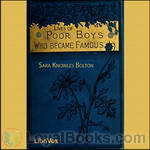 Lives of Poor Boys Who Became Famous
Lives of Poor Boys Who Became Famous
These characters have been chosen from various countries and from varied professions, that the youth who read this book may see that poverty is no barrier to success. It usually develops ambition, and nerves people to action. Life at best has much of struggle, and we need to be cheered and stimulated by the careers of those who have overcome obstacles.If Lincoln and Garfield, both farmer-boys, could come to the Presidency, then there is a chance for other farmer-boys. If Ezra Cornell, a mechanic, could become the president of great telegraph companies, and leave millions to a university, then other mechanics can come to fame... | |
 Famous American Statesmen
Famous American Statesmen
A sketch of the lives of some of America's early Statesmen: George Washington, Benjamin Franklin, Thomas Jefferson, Alexander Hamilton, Andrew Jackson, Daniel Webster, Henry Clay, Charles Sumner, Ulysses S. Grant, and James A. Garfield. | |
By: Sarah Morgan Dawson (1842-1909) | |
|---|---|
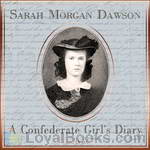 A Confederate Girl's Diary
A Confederate Girl's Diary
Sarah Morgan Dawson was a young woman of 20 living in Baton Rouge, Louisiana, when she began this diary. The American Civil War was raging. Though at first the conflict seemed far away, it would eventually be brought home to her in very personal terms. Her family's loyalties were divided. Sarah's father, though he disapproved of secession, declared for the South when Louisiana left the Union. Her eldest brother, who became the family patriarch when his father died in 1861, was for the Union, though he refused to take up arms against his fellow Southerners... | |
By: Sarah Orne Jewett (1849-1909) | |
|---|---|
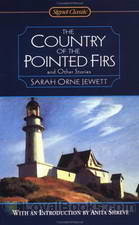 Country of the Pointed Firs
Country of the Pointed Firs
The Country of the Pointed Firs (1896) is considered Jewett’s finest work, described by Henry James as her “beautiful little quantum of achievement.” Despite James’s diminutives, the novel remains a classic. Because it is loosely structured, many critics view the book not as a novel, but a series of sketches; however, its structure is unified through both setting and theme. Jewett herself felt that her strengths as a writer lay not in plot development or dramatic tension, but in character development... | |
By: Seabury Quinn (1889-1969) | |
|---|---|
 Servants of Satan
Servants of Satan
Noted weird fiction author Seabury Quinn brings to life true tales of witch trial persecution within the pages of Weird Tales magazine! - Summary by Ben Tucker | |
By: Sidney Heath (1872-1953) | |
|---|---|
 Exeter
Exeter
Exeter, county town of Devon, is one of England's most historic cities with remains of the Roman occupation and medieval times still on view. Exeter cathedral, founded in 1050 and completed 400 years later, has the longest uninterrupted vaulted ceiling in the country. This short book in Blackie & Sons' Beautiful England series details the history of the city and it many sites of interest, with chapters on the city, the cathedral and the River Exe. Readers who can access the printed version of the book on Internet Archive, may enjoy looking at E. W Haslehursts' 12 colour illustrations while listening to this audiobook. - Summary by Phil Benson | |
By: Simon Dubnow (1860-1941) | |
|---|---|
 History of the Jews in Russia and Poland Volume III, From the Accession of Nicholas II until the Present Day
History of the Jews in Russia and Poland Volume III, From the Accession of Nicholas II until the Present Day
Simon Dubnow was born in 1860 to a poor Jewish family in Belarussian town of Mstsislaw and later became authority of Jewish history and an activist. Due to his Jewish origin, he had to move to St.Petersburg, Odessa, Vilna, St.Petersburg, Kaunas, Berlin and finally Riga. When Nazi troops occupied Latvia 1941, he was moved with thousands of other Jews to Riga ghetto and was eventually killed. His life is a symbol of Jewish suffering in Eastern Europe. In this book Jews have been migrating from Germany... | |
 History of the Jews in Russia and Poland, Volume 1 [of 3] From the Beginning until the Death of Alexander I (1825)
History of the Jews in Russia and Poland, Volume 1 [of 3] From the Beginning until the Death of Alexander I (1825)
Simon Dubnow was born in 1860 to a poor Jewish family in Belarussian town of Mstsislaw and later became authority of Jewish history and an activist. Due to his Jewish origin, he had to move to St.Petersburg, Odessa, Vilna, St.Petersburg, Kaunas, Berlin and finally Riga after Hitler came to power. When Nazi troops occupied Latvia 1941, he was moved with thousands of other Jews to Riga ghetto and was eventually killed. His life is a symbol of Jewish suffering in Eastern Europe in the first half of 20 century. This book is one of the most extensive and thorough study of the glory and suffering of the Jews in Russia and Poland for 2000 years. - Summary by S. S. Kim | |
By: Sinclair Lewis (1885-1951) | |
|---|---|
 Main Street
Main Street
A social satire, Main Street became a best-seller soon after its publication, fascinating readers with its biting humor and realistic portrayal of small-town communities. Published in 1920, the novel follows Carol Milford as she moves to a conventional small town, where she encounters its conceited residents characterized by their ignorance, hypocrisy, and smugness, while simultaneously being the target of their careless ridicule. Furthermore, the novel efficiently exemplifies the dividing line between the sophisticated urban setting and the conventionally governed small-town, as it tackles issues of embracing differences, social class, disillusionment, feminism, and community... | |
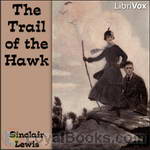 The Trail of the Hawk
The Trail of the Hawk
| |